
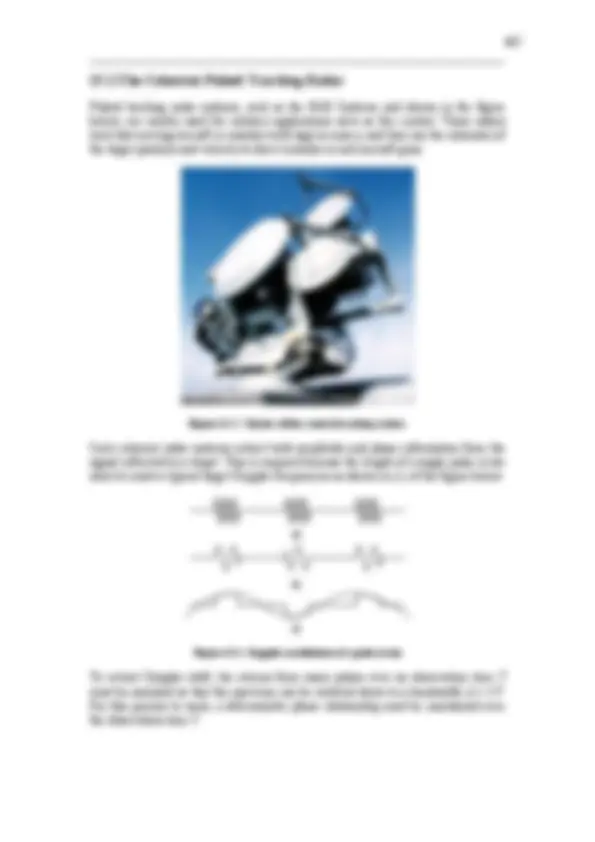
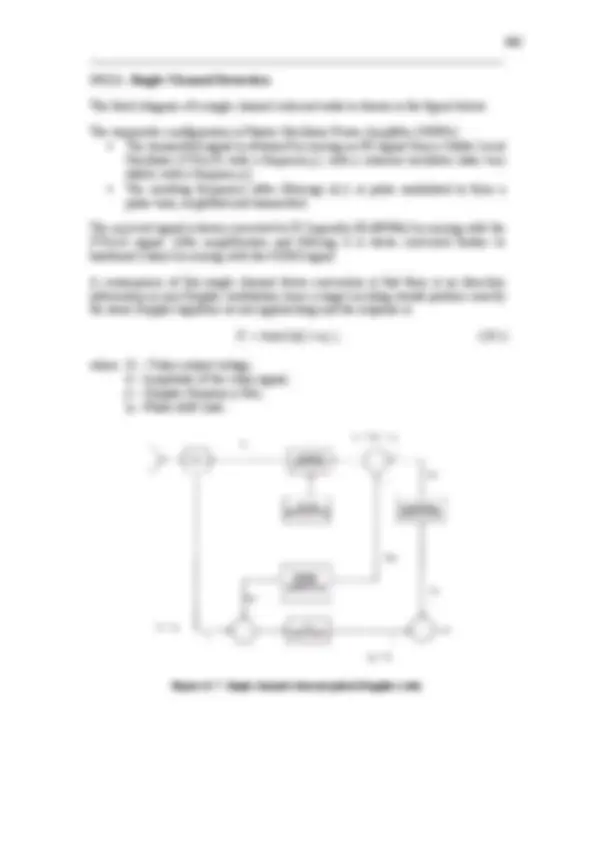
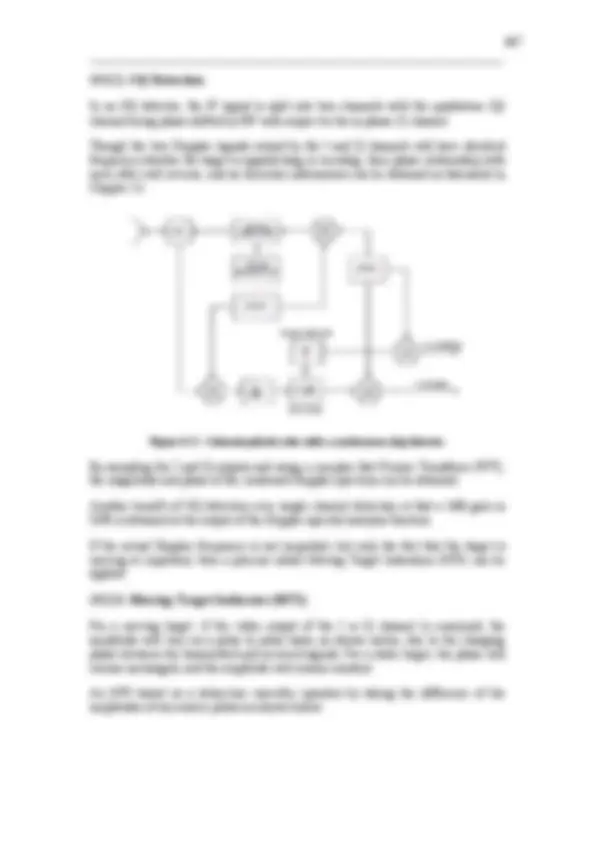
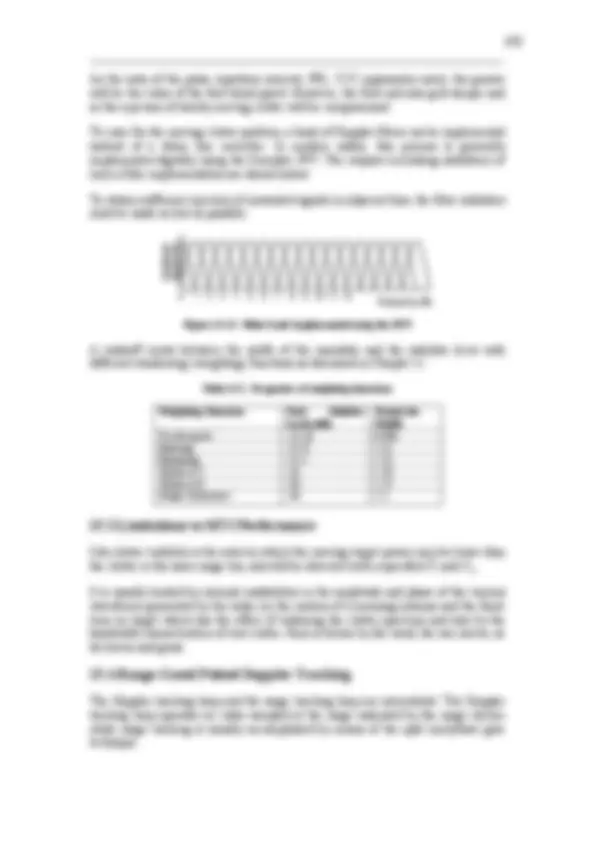
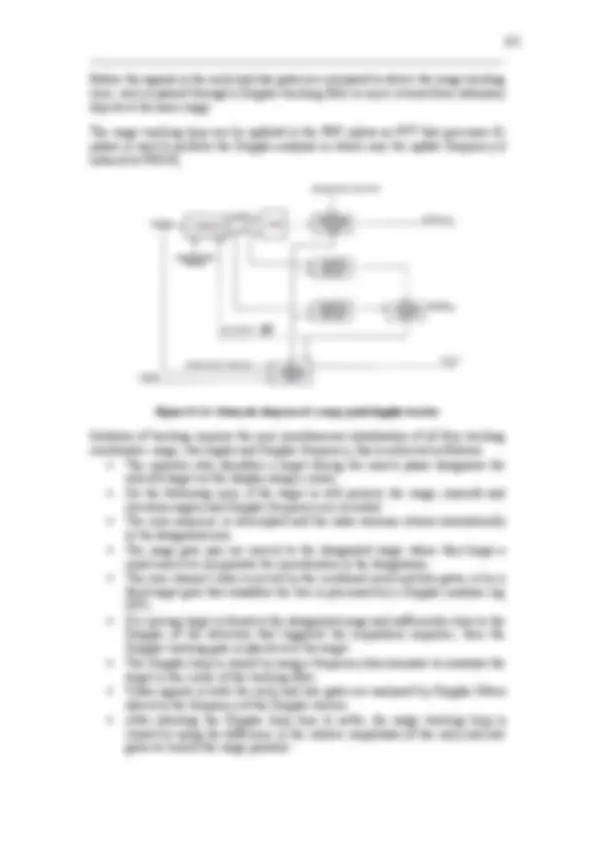
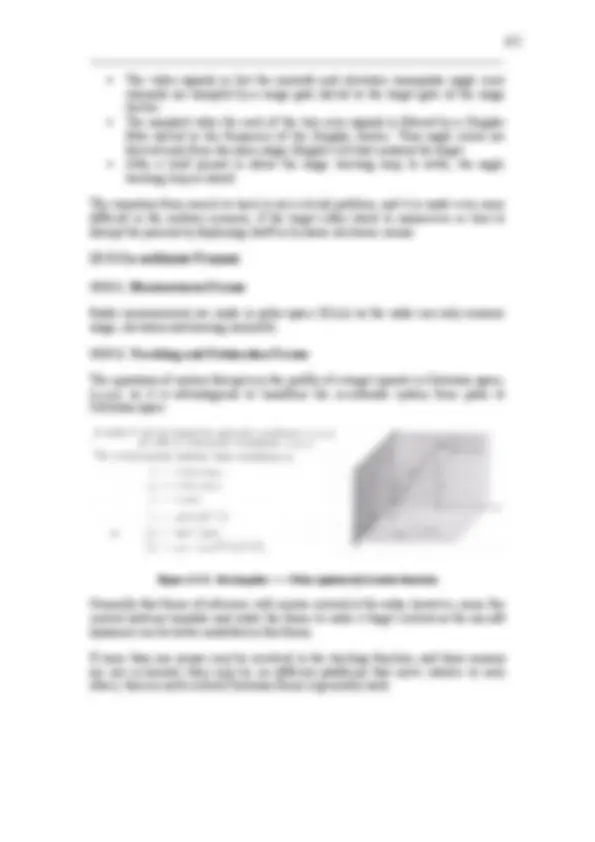
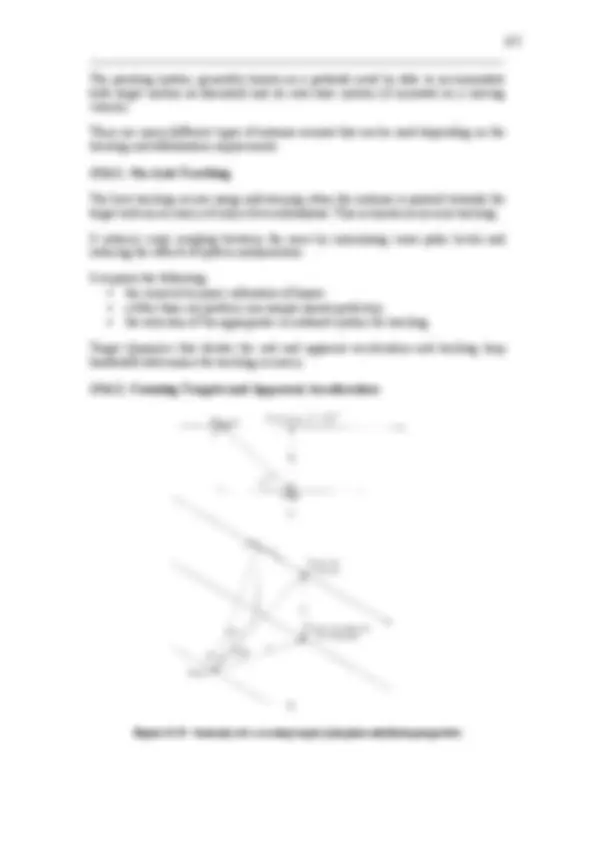
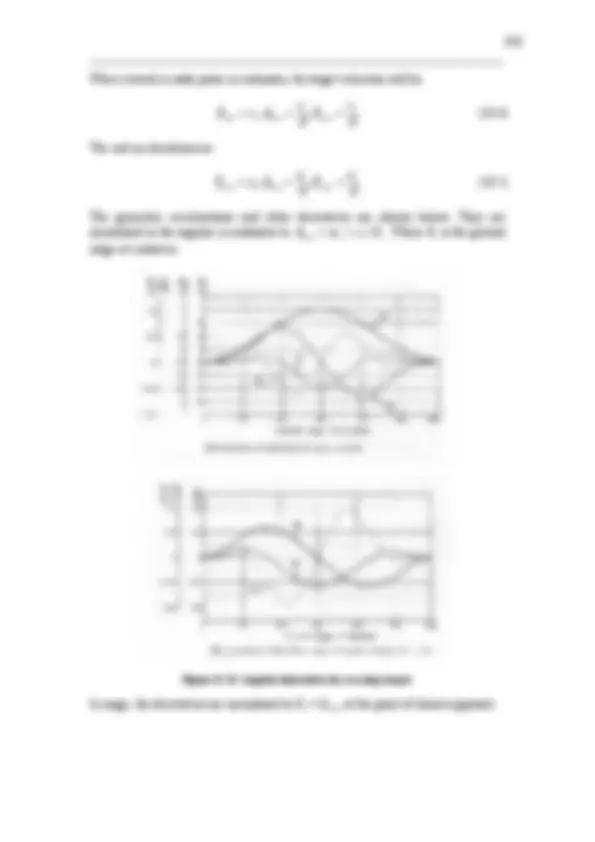
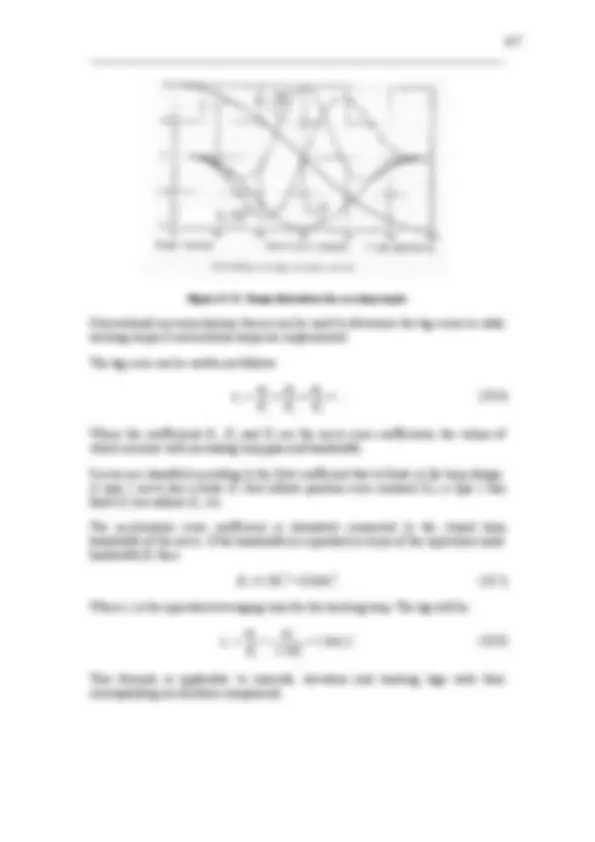
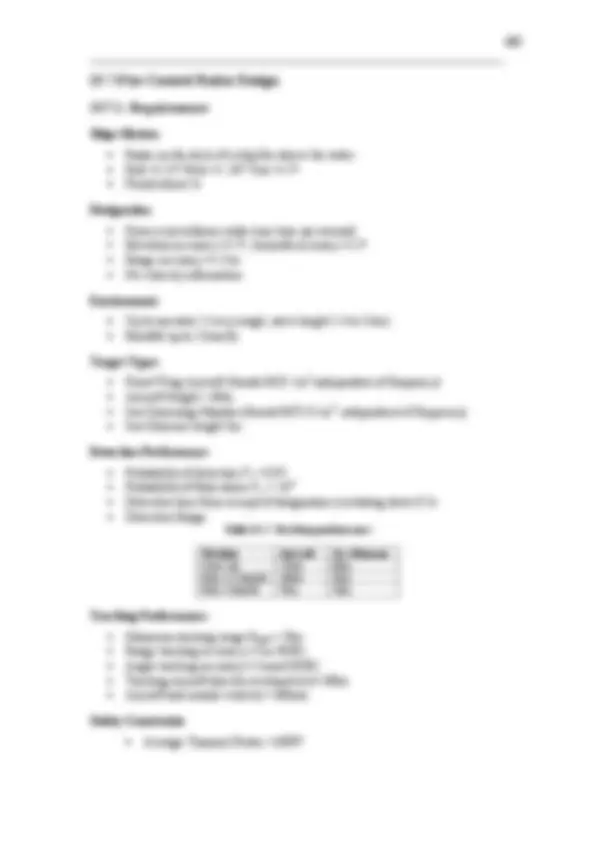
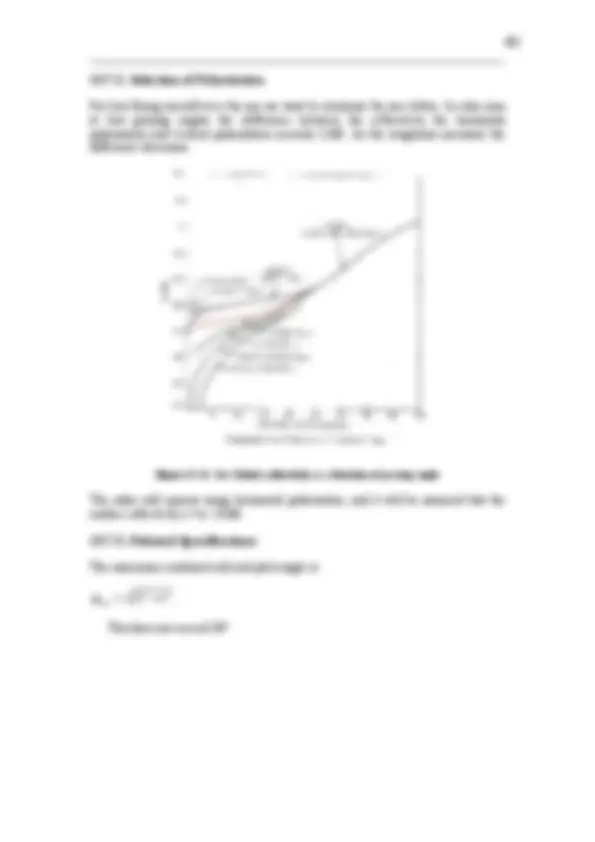
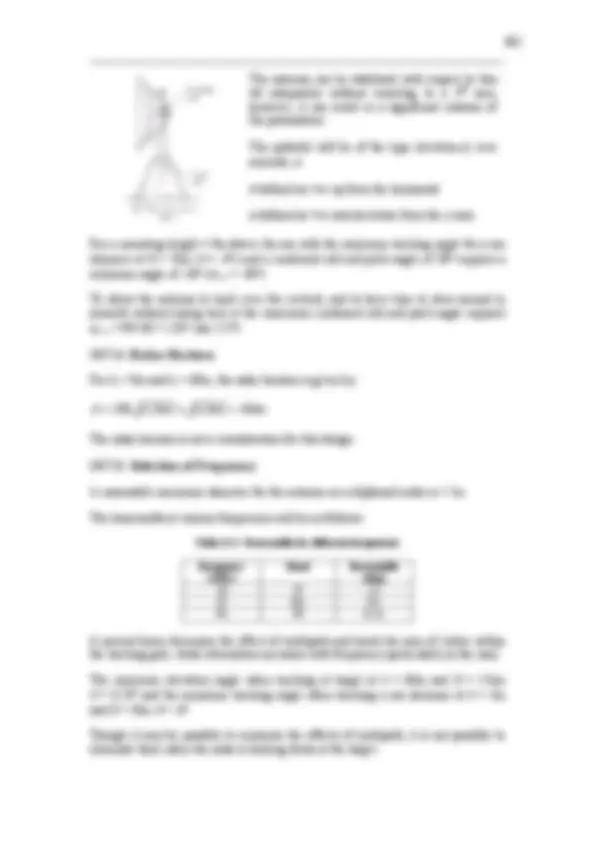
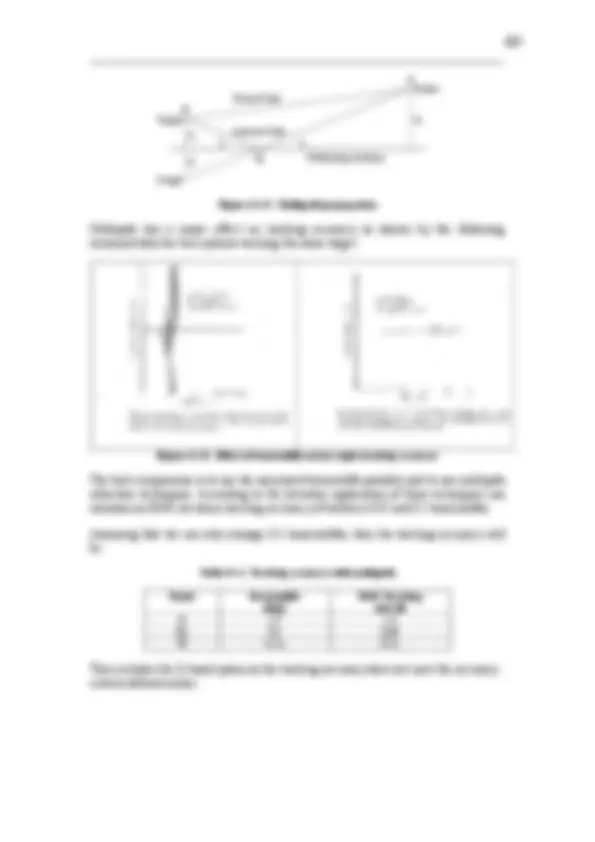
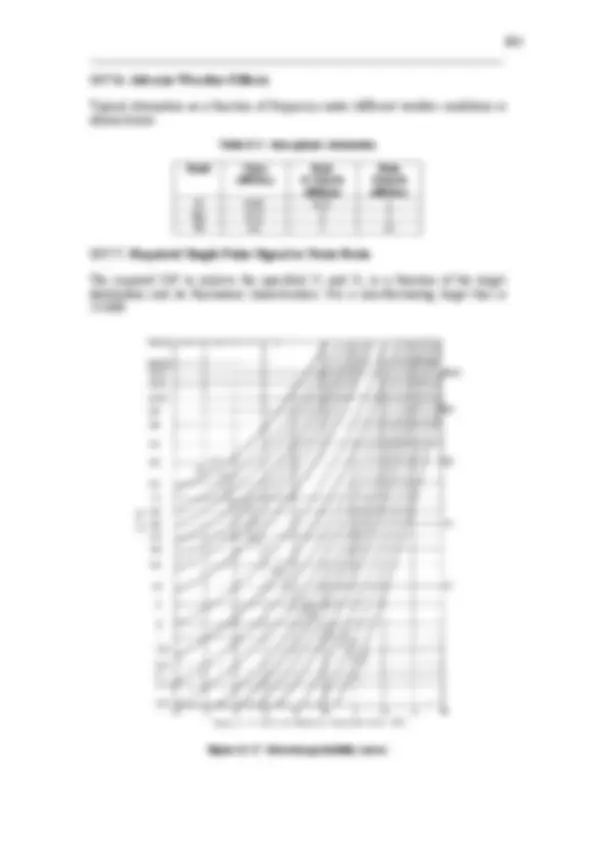
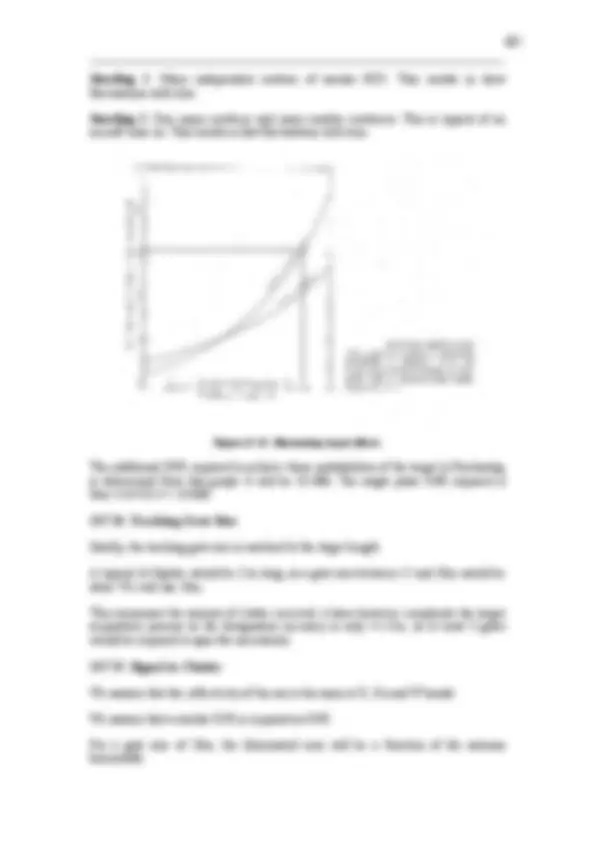
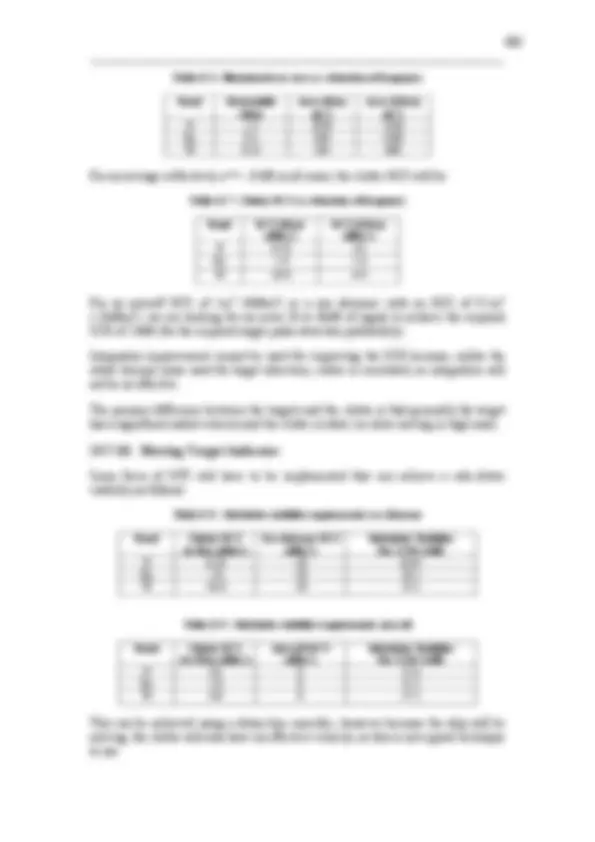
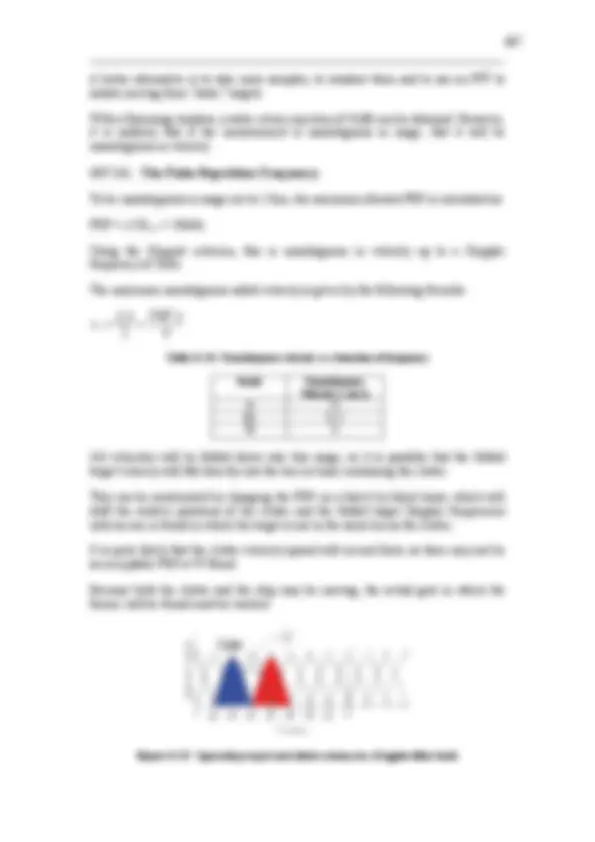
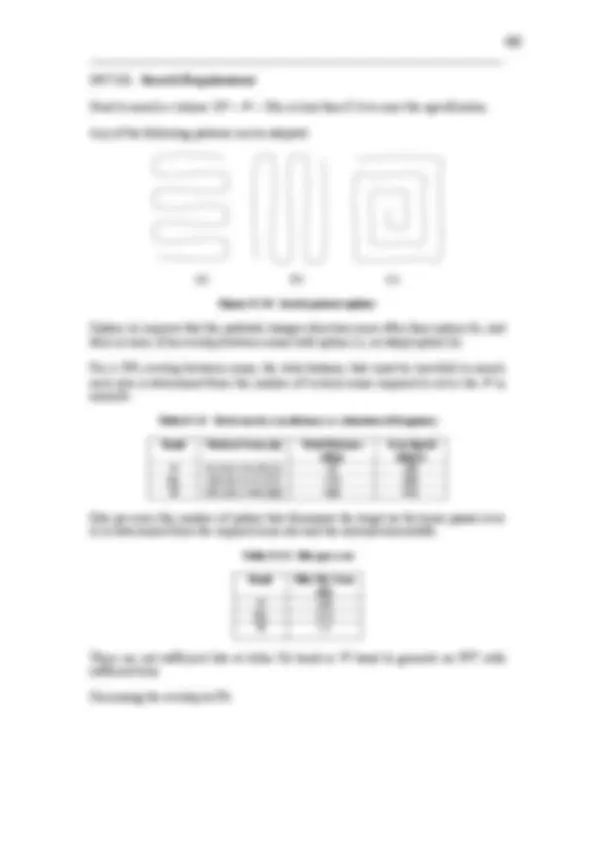
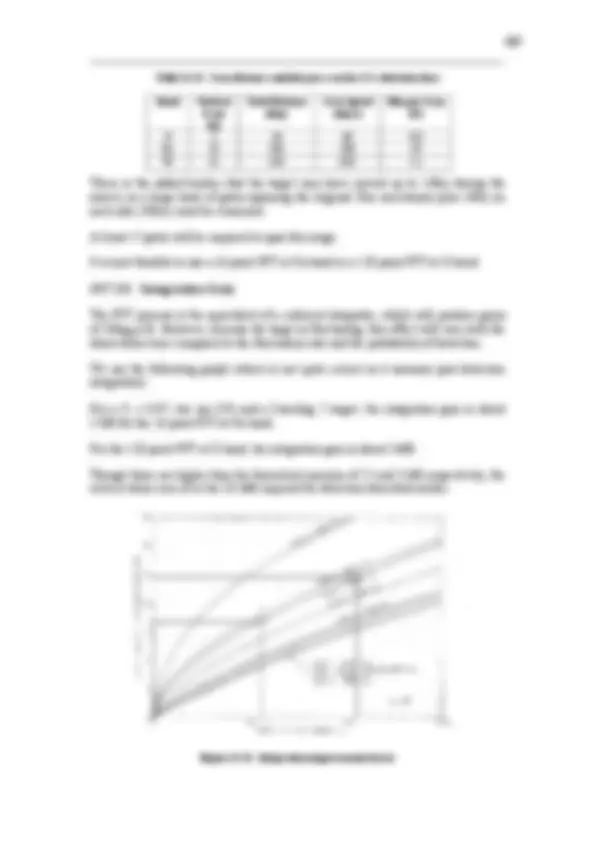
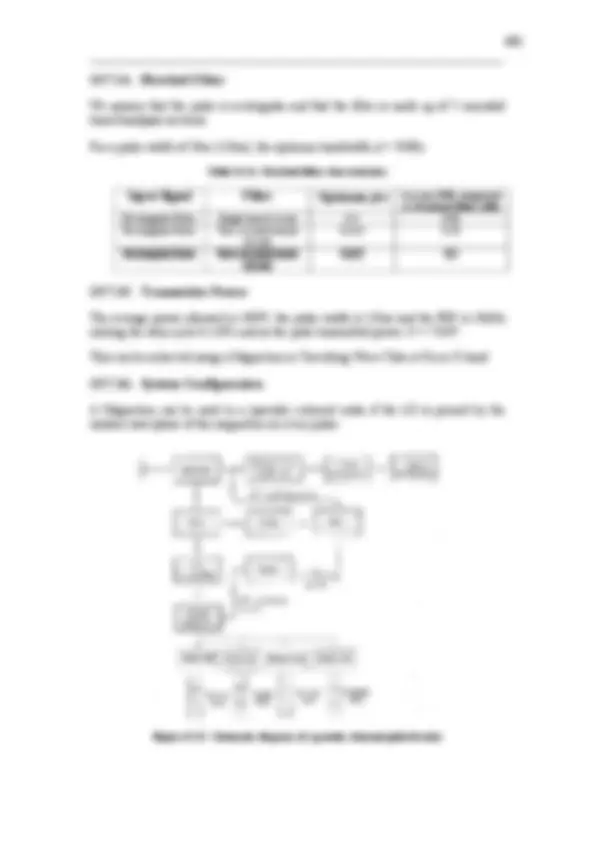
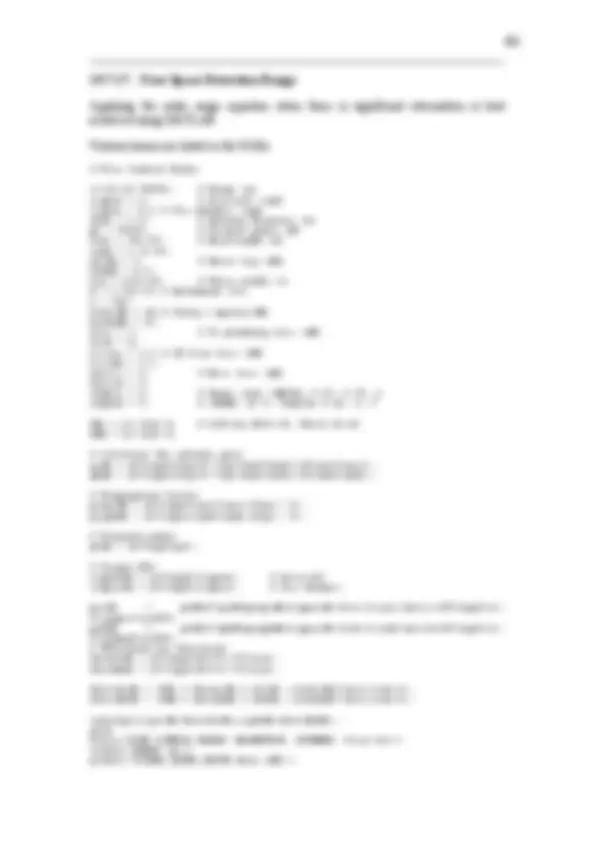
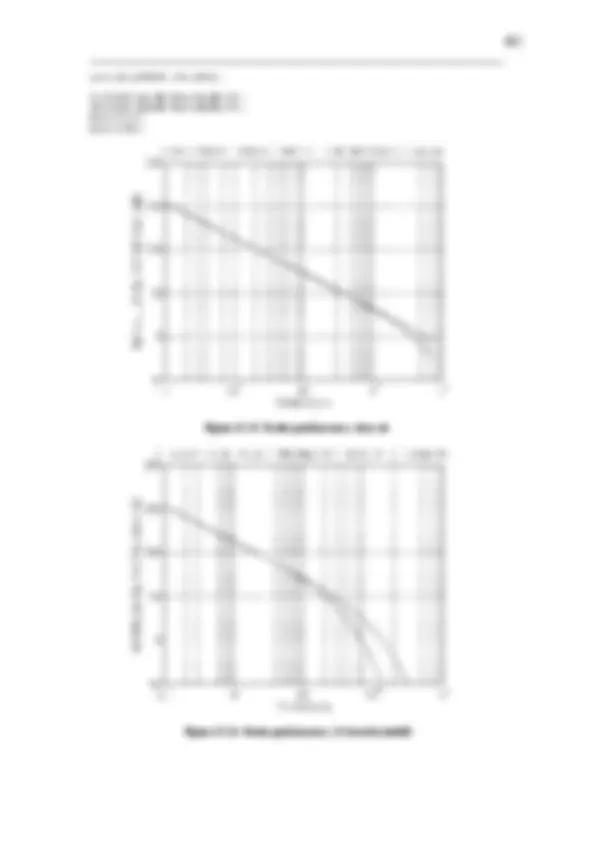
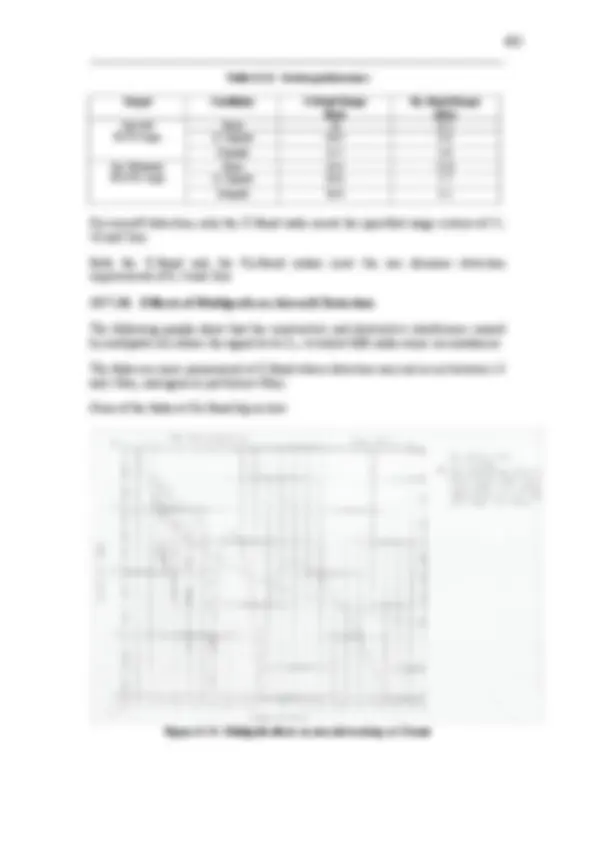
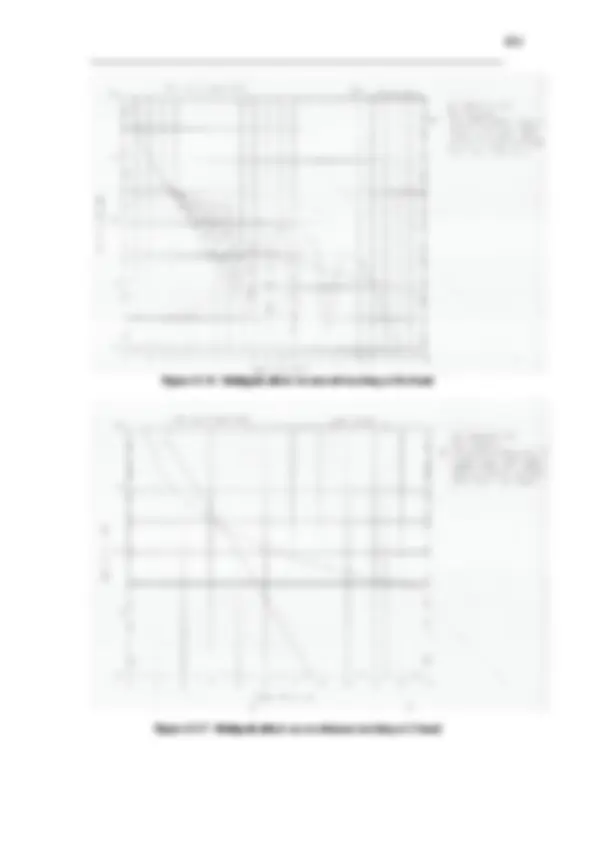
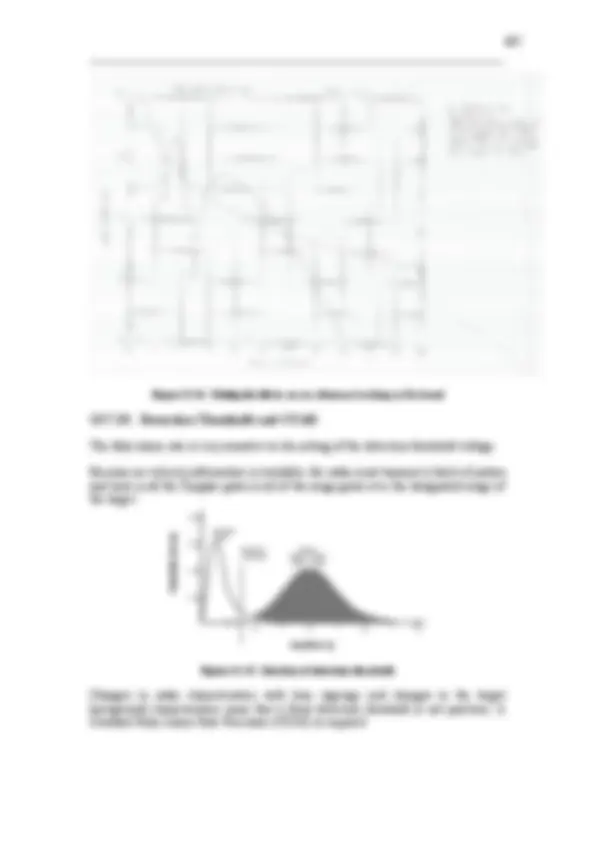
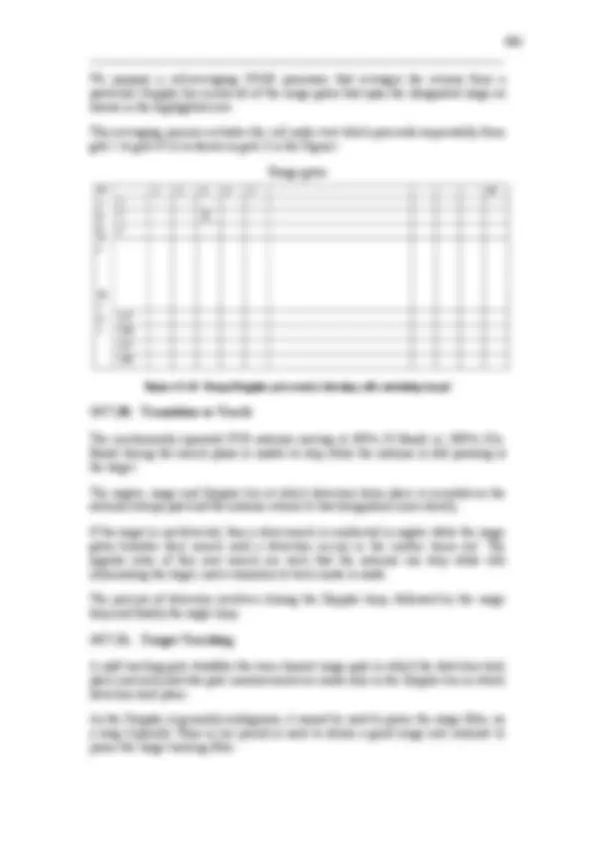
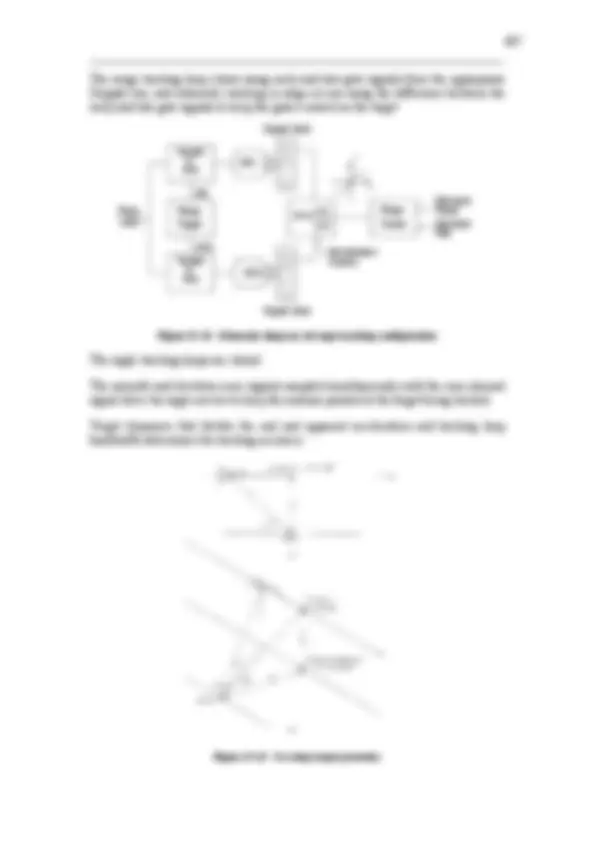
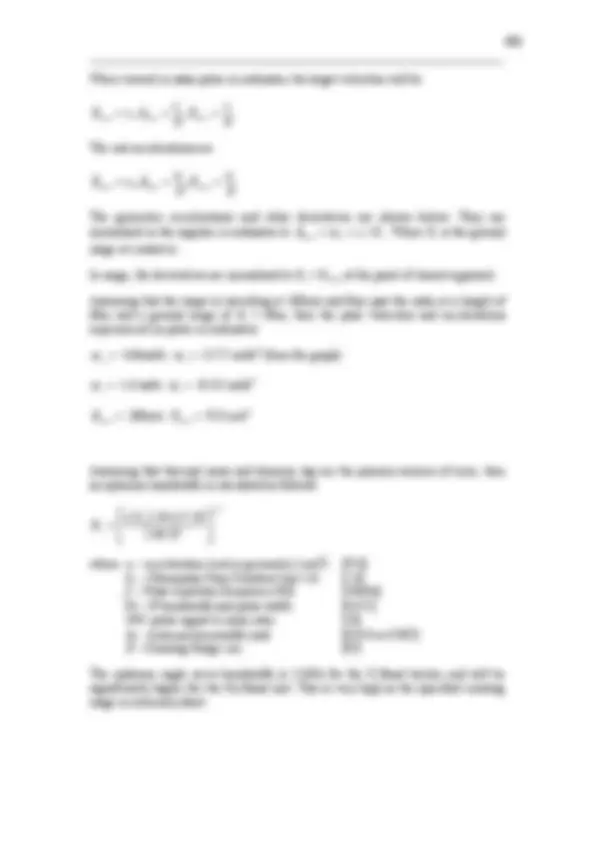
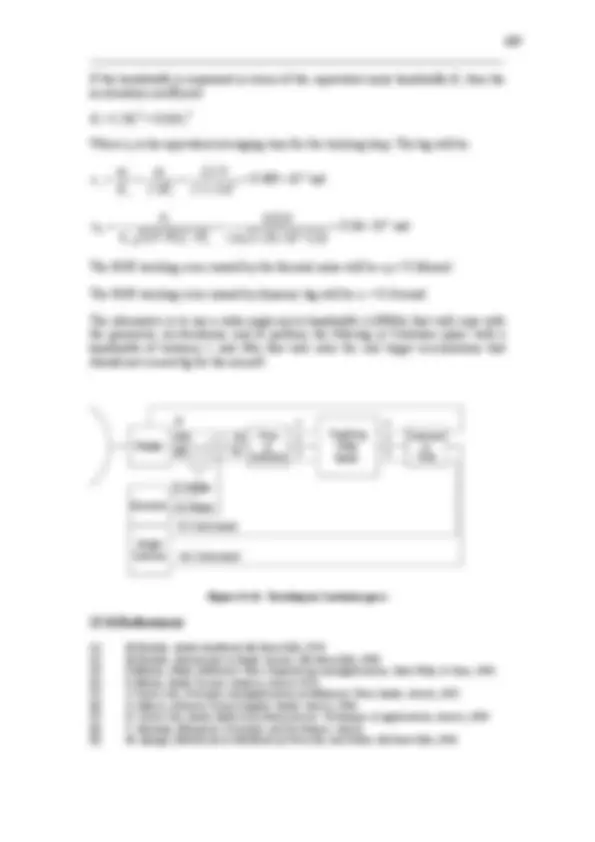



Study with the several resources on Docsity

Earn points by helping other students or get them with a premium plan


Prepare for your exams
Study with the several resources on Docsity

Earn points to download
Earn points by helping other students or get them with a premium plan
Community
Ask the community for help and clear up your study doubts
Discover the best universities in your country according to Docsity users
Free resources
Download our free guides on studying techniques, anxiety management strategies, and thesis advice from Docsity tutors
tws radar system and tracking moving target
Typology: Study Guides, Projects, Research
1 / 38

This page cannot be seen from the preview
Don't miss anything!































The track of a target in 2D can be determined from a surveillance radar Plan Position Indicator (PPI) display by plotting the target coordinates as they move when measured from scan to scan.
Figure 15.1: Examples of plan position indicator display hardware
At its most simple, this tracking function can be performed by a radar operator marking the face of the cathode ray tube with a pen. This is an inaccurate process and limits the number of targets that can be handled at one time.
Figure 15.2: Plan position indicator showing a simulated and a real display
Automatic trackers operate as follows (for a single target)
1 2 3
4 5 6
Figure 15.3: PPI Display sequence to illustrate the target tracking process
One method of performing the filtering and prediction function is to use αβ filters
the measured positions from polar to Cartesian ( x , y ) before filtering as shown in the figure.
Figure 15.4: Track while scan processing
The block diagram of a single channel coherent radar is shown in the figure below.
The transmitter configuration is Master Oscillator Power Amplifier (MOPA)
The received signal is down converted to IF (typically 30-60MHz) by mixing with the STALO signal. After amplification and filtering it is down converted further to baseband (video) by mixing with the COHO signal
A consequence of this single channel down conversion is that there is no direction information in any Doppler modulation since a target receding would produce exactly the same Doppler signature as one approaching and the response is
V 1 = k sin ( 2 π f (^) d t + φ o ), (18.1)
where V 1 – Video output voltage, k – Amplitude of the video signal, f (^) d – Doppler frequency (Hz),
Figure 15.7: Single channel coherent pulsed Doppler radar
In an I/Q detector, the IF signal is split into two channels with the quadrature (Q) channel being phase shifted by 90° with respect to the in-phase (I) channel
Though the two Doppler signals output by the I and Q channels will have identical frequency whether the target is approaching or receding, their phase relationship with each other will reverse, and so direction information can be obtained as discussed in Chapter 13.
Figure 15.8: Coherent pulsed radar with a synchronous (i/q) detector
By sampling the I and Q outputs and using a complex fast Fourier Transform (FFT), the magnitude and phase of the combined Doppler spectrum can be obtained.
Another benefit of I/Q detection over single channel detection is that a 3dB gain in SNR is obtained at the output of the Doppler spectral analysis function.
If the actual Doppler frequency is not important, but only the fact that the target is moving at important, then a process called Moving Target Indication (MTI) can be applied.
For a moving target. if the video output of the I or Q channel is examined, the amplitude will vary on a pulse to pulse basis, as shown earlier, due to the changing phase between the transmitted and received signals. For a static target, the phase will remain unchanged, and the amplitude will remain constant.
An MTI based on a delay-line canceller operates by taking the difference of the amplitudes of successive pulses as shown below.
Blind Speeds
If the target Doppler frequency lies in the region where f (^) d ≈ 1/ T , it can be seen, from the transfer function above, that it is attenuated. Zeros also occur at 2/ T , 3/ T … n / T
d nf p T
n f = = , (18.2)
where f (^) d – Doppler frequency (Hz), f (^) p – Pulse repetition frequency (PRF) (Hz).
The actual blind speeds are given by the following
p n
n f T
n v
= = m/s, (18.3)
where v (^) n – Blind speed (m/s),
n – 1,2,3,…
To obtain a high first blind speed, it is necessary to either operate with a long wavelength (often not practical), or to operate with a high PRF. However, a high PRF becomes ambiguous at a short range which is also not ideal for surveillance or long range tracking radar applications.
Staggered PRF and Blind Speed
The effect of blind speeds can be reduced by operating at more than one PRF as shown below.
Figure 15.12: Effect of staggered PRF on MTI transfer function
As the ratio of the pulse repetition interval, PRI, T 1 / T 2 approaches unity, the greater will be the value of the first blind speed. However, the first null also gets deeper and so the rejection of slowly moving clutter will be compromised.
To cater for the moving clutter problem, a bank of Doppler filters can be implemented instead of a delay line canceller. In modern radars, this process is generally implemented digitally using the Complex FFT. The outputs (excluding sidelobes) of such a filter implementation are shown below.
To obtain sufficient rejection of unwanted signals in adjacent bins, the filter sidelobes must be made as low as possible.
AmplitudeResponse (^0 1 2 3 4 5 6 7 8 9 10 11 12) Frequency Bin
Figure 15.13: Filter bank implemented using the FFT
A tradeoff exists between the width of the mainlobe and the sidelobe level with different windowing (weighting) functions as discussed in Chapter 11.
Table 15.1: Properties of weighting functions
Weighting Function Peak Sidelobe Level (dB)
MainLobe Width Rectangular -13.26 0. Hanning -31.5 1. Hamming -42.5 1. Taylor n=5 -34 1. Taylor n=6 -40 1. Dolph Chebyshev -40 1.
Sub-clutter visibility is the ratio by which the moving-target power may be lower than the clutter in the same range bin, and still be detected with a specified Pd and Pfa.
It is usually limited by internal instabilities in the amplitude and phase of the various waveforms generated by the radar, by the motion of a scanning antenna and the finite time on target which has the effect of widening the clutter spectrum and also by the bandwidth characteristics of real clutter. Rain is blown by the wind, the sea moves, as do leaves and grass.
The Doppler tracking loop and the range tracking loop are interrelated. The Doppler tracking loop operates on video sampled at the range indicated by the range tracker while range tracking is usually accomplished by means of the split (early/late) gate technique.
The transition from search to track is not a trivial problem, and it is made even more difficult in the military scenario, if the target either starts to manoeuvre or tries to disrupt the process by deploying chaff or by some electronic means
Radar measurements are made in polar space (R,θ,φ) as the radar can only measure range, elevation and bearing (azimuth).
The equations of motion that govern the profile of a target operate in Cartesian space, (x,y,z), so it is advantageous to transform the co-ordinate system from polar to Cartesian space.
Figure 15.15: Rectangular <–> Polar (spherical) transfer function
Generally this frame of reference will remain centred at the radar, however, some fire control systems translate and rotate the frame to make it target centred as the aircraft dynamics can be better modelled in this frame.
If more than one sensor may be involved in the tracking function, and these sensors are not co-located (they may be on different platforms that move relative to each other), then an earth centred Cartesian frame is generally used.
Figure 15.16: Antenna mounts
The pencil beam of a tracking radar must be pointed at the target for tracking to occur. This is quite a challenge as a typical tracking radar has a 3dB beamwidth between 1° and 2°, or smaller in the case of the radar for a close-in weapon system onboard ship.
A servo system is used to drive the antenna in the direction that minimises the tracking errors. Most servo systems are Type II, or zero velocity error systems since, in theory, no steady-state error exists for a constant velocity (angular rate) input. With Type II systems, dynamic lags proportional to the magnitude of the target acceleration do occur. To accommodate this, the tracking bandwidth is adjusted to minimise the tracking error which is due to a combination of measurement noise and dynamic lag.
The pointing system, generally known as a pedestal must be able to accommodate both target motion as discussed and its own base motion (if mounted on a moving vehicle)
There are many different types of antenna mounts that can be used depending on the tracking and stabilisation requirements.
The best tracking occurs using null-steering when the antenna is pointed towards the target with an accuracy of only a few milliradians. This is known as on-axis tracking.
It reduces cross coupling between the axes by minimising cross polar levels and reducing the effects of system nonlinearities.
It requires the following:
Target dynamics that dictate the real and apparent acceleration and tracking loop bandwidth determines the tracking accuracy.
Figure 15.19: Geometry of a crossing target (a) in plan and (b) in perspective
When viewed in radar polar co-ordinates, the target velocities will be
v E R
v R &^ (^) max = vt , A &max= t ,&max= t. (18.4)
The real accelerations are
a E R
a R &&^ (^) max = at , A &&max= t ,&&max= t. (18.5)
The geometric accelerations and other derivatives are shown below. They are
range at crossover.
Figure 15.20: Angular derivatives for crossing targets
In range, the derivatives are normalised to Ra = Rmin , at the point of closest approach.
If thermal noise and dynamic lag are the primary sources of error, then an optimum bandwidth can be obtained to minimise the total error variance. According to Barton, this is
2 2
2 2
2 2 3 ( / ) 6. (^3) n
t m r
n R B
a k f B S N
1 / 5 2 2 3
2 2
a k f B S N B (^) n t m r θ
τ , (18.10)
where: at – acceleration (real or geometric) (m/s 2 ), k (^) m – Monopulse Gain Constant (typ 1.6), f (^) r – Pulse repetition frequency (Hz),
S/N – Single pulse signal to noise ratio,
R – Crossing Range (m).
Figure 15.22: Typical noise and lag optimisation
One method of maintaining the noise performance of the system while minimising the dynamic lag is to operate with a wide angle-servo bandwidth, and to perform the tracking and smoothing in Cartesian space.
As there are no geometric accelerations in Cartesian space, it is possible to reduce the filter bandwidth to less than 1Hz. This determines the noise performance of the tracker.
Because the angle servo bandwidth is wide (typically 10 to 100Hz for a real system), the dynamic lag for geometric accelerations is limited.
A simplified block diagram showing the loop configuration is shown below.
Radar
Polar to Cartesian
Tracking Filter Bank
Cartesian to Polar
Encoders
Angle Servos
x y z
x y z
R
dEl
dAz Az El
El Meas Az Meas El Command
Az Command
Figure 15.23: Tracking in Cartesian space
For low flying aircraft over the sea we want to minimise the sea clutter. In calm seas at low grazing angles the difference between the reflectivity for horizontal polarisation and vertical polarisation exceeds 12dB. As the roughness increases the difference decreases.
Figure 15.24: Sea Clutter reflectivity as a function of grazing angle
The radar will operate using horizontal polarisation, and it will be assumed that the
The maximum combined roll and pitch angle is
2 2
This does not exceed 30°
The antenna can be stabilised with respect to this tilt adequately without resorting to a 3 rd^ axis, however, it can result in a significant rotation of the polarisation
For a mounting height ≈ 8m above the sea with the minimum tracking angle for a sea
To allow the antenna to track over the vertical, and to have time to slew around in azimuth without losing lock at the maximum combined roll and pitch angle requires
For hr = 8m and ht = 60m, the radar horizon is given by
d = 130 ( hr ( km )+ ht ( km )= 43 km
The radar horizon is not a consideration for this design
A reasonable maximum diameter for the antenna on a shipboard radar is 1.5m.
The beamwidth at various frequencies will be as follows:
Table 15.3: Beamwidth for different frequencies
Frequency (GHz)
Band Beamwidth (deg) 10 X 1. 35 Ka 0. 94 W 0.
A narrow beam decreases the effect of multipath and limits the area of clutter within the tracking gate, while attenuation increases with frequency (particularly in the rain)
The minimum elevation angle when tracking at target at h = 60m and R = 15km
Though it may be possible to minimise the effects of multipath, it is not possible to eliminate them when the radar is looking down at the target.